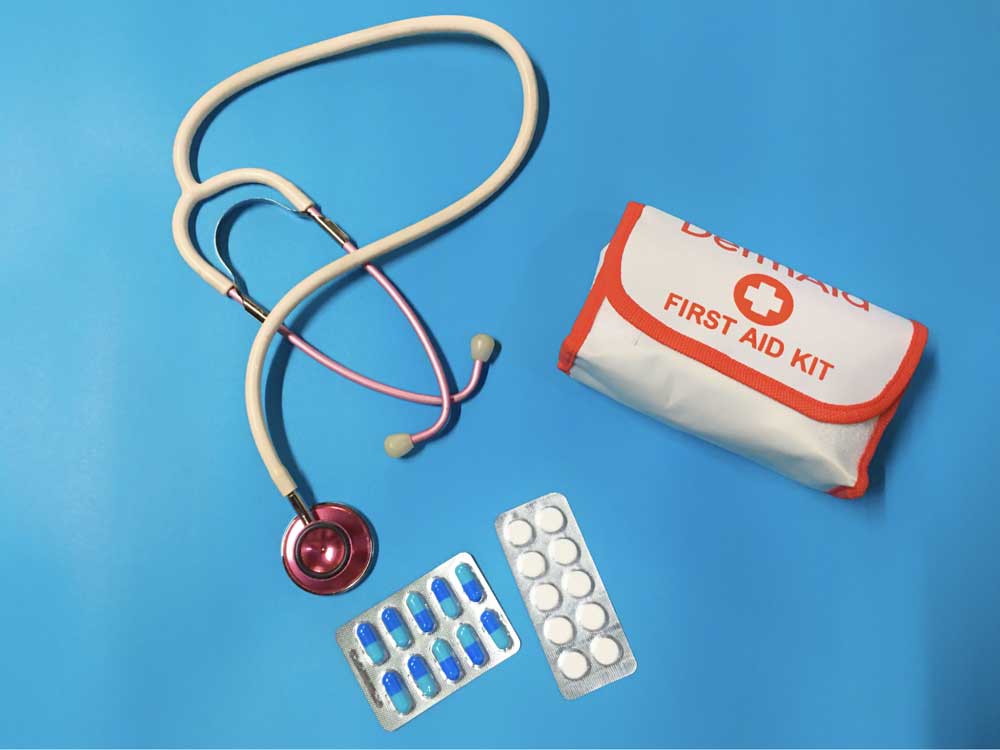Every home and car should be equipped with a basic First Aid Kit, and it should be checked regularly to make sure that it’s complete and that products have not expired.
First Aid Kits can be purchased at your pharmacy, drug store, local Red Cross office or make one of your own
Here’s what your First-Aid kit should include:
- An updated First-Aid manual
- Sterile gauze pads and adhesive tape
- Small and large adhesive bandages
- Butterfly wound strips
- An elastic (tensor) bandage
- A splint
- Antiseptic wipes
- Antibiotic ointment
- Antiseptic solution, such as hydrogen peroxide
- Antihistamine cream or hydrocortisone cream (1%)
- Pain relief, including aspirin, acetaminophen and ibuprofen (add children’s versions if needed)
- Soap
- Tweezers, sharp scissors and safety pins
- Sterile cotton balls
- Disposable instant cold packs
- Calamine lotion
- Digital thermometer
- Tooth preservation kit
- Plastic non-latex gloves
- Mouthpiece for giving CPR
- Blanket

